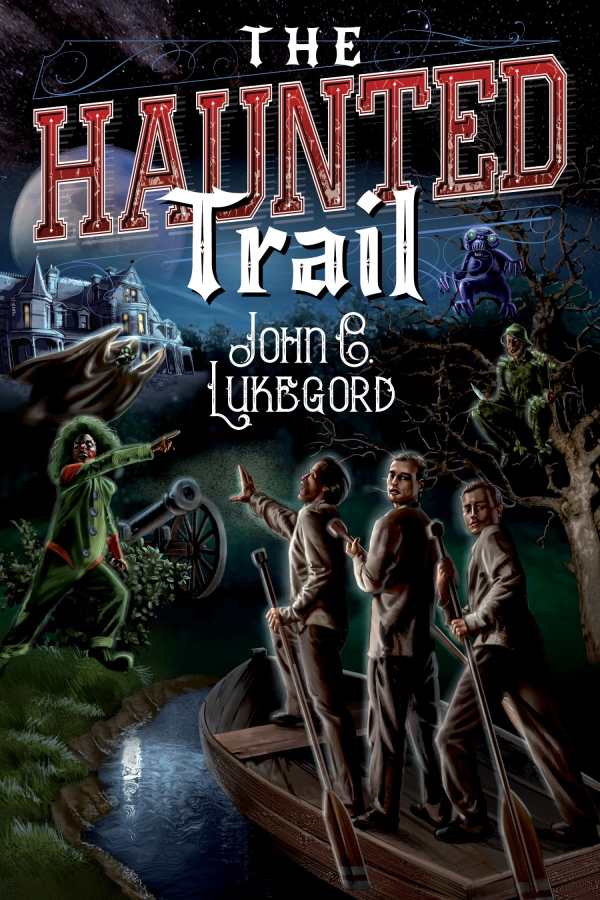
The Haunted Trail
Scary stories set in an Irish locale are packed full of grim deeds and unceasing violence.
A bloodthirsty collection of madmen and murderers fill the Dublin woods in John C. Lukegord’s campy and violent The Haunted Trail.
Dylan, a young Irish lad, is the first character in the collection to discover why you don’t stray from familiar roads on Halloween night: just beyond the treeline, bloodthirsty fiends await, sharpening their blades and planning atrocities, hoping to punish any deviation from the norm. Dylan’s trick with a sacred scarecrow leads him into the clutches of a man driven mad by a cursed mummy, and puts him squarely under the guillotine’s blade.
His is the first of many heads to roll in this gory collection. Grisly ends meet those who wander into the woods, whether they’re truly trespassing or not. Dublin’s edges prove to be a veritable house of horrors, where innocents are as likely to wander into an electric chair as they are to find themselves at the wrong end of cannonballs. The former occupants of an insane asylum gather to ensure that no one encroaches upon their territory, while helpful ghosts warn people off, and the spirit of an Egyptian mummy—always in search of a magical four leaf clover—threatens to consume Ireland entirely.
Few characters last long in this construction, and none are dominant from end to beginning; instead, the madmen and victims of the story are a motley crew. Mad clowns and filthy hermits have their brief spurts of bloodletting, though their tales soon transition into those of other crazy wood dwellers. Backstories are both swift and hyperspecific—the dates of violent events are recorded carefully, and full names are a given, though often characters don’t last long after their fast love stories or dark backgrounds are revealed.
Text clips along quickly, though short sentences sometimes repeat thoughts from those previous, and transitions between events are staccato in form. Blunt explanations initially suggest that a young audience is the target, although vulgarities soon pepper the text and are more likely to appeal to older readers.
Dark modifiers are so consistent that they become humdrum—lunatics proliferate, as do shady figures and “pussies” who wait to meet their horrific ends. The casual cruelty of incidental characters, like the officers who police the insane asylum for a brief moment, comes to feel gratuitous, as do asides about the stupidity of the homeless denizens of the outer woods.
The narrative proves to be more devoted to delivering instances of shocking violence than it is to presenting a cohesive story, though a late turn toward vanquishing the mummy seems to lead into future volumes. Anachronisms are not uncommon. Occasional black-and-white drawings bring a few feature characters more to life.
The Haunted Trail gathers scary stories in an Irish locale that are packed full of grim deeds and unceasing violence.
Reviewed by
Michelle Anne Schingler
Disclosure: This article is not an endorsement, but a review. The publisher of this book provided free copies of the book and paid a small fee to have their book reviewed by a professional reviewer. Foreword Reviews and Clarion Reviews make no guarantee that the publisher will receive a positive review. Foreword Magazine, Inc. is disclosing this in accordance with the Federal Trade Commission’s 16 CFR, Part 255.
